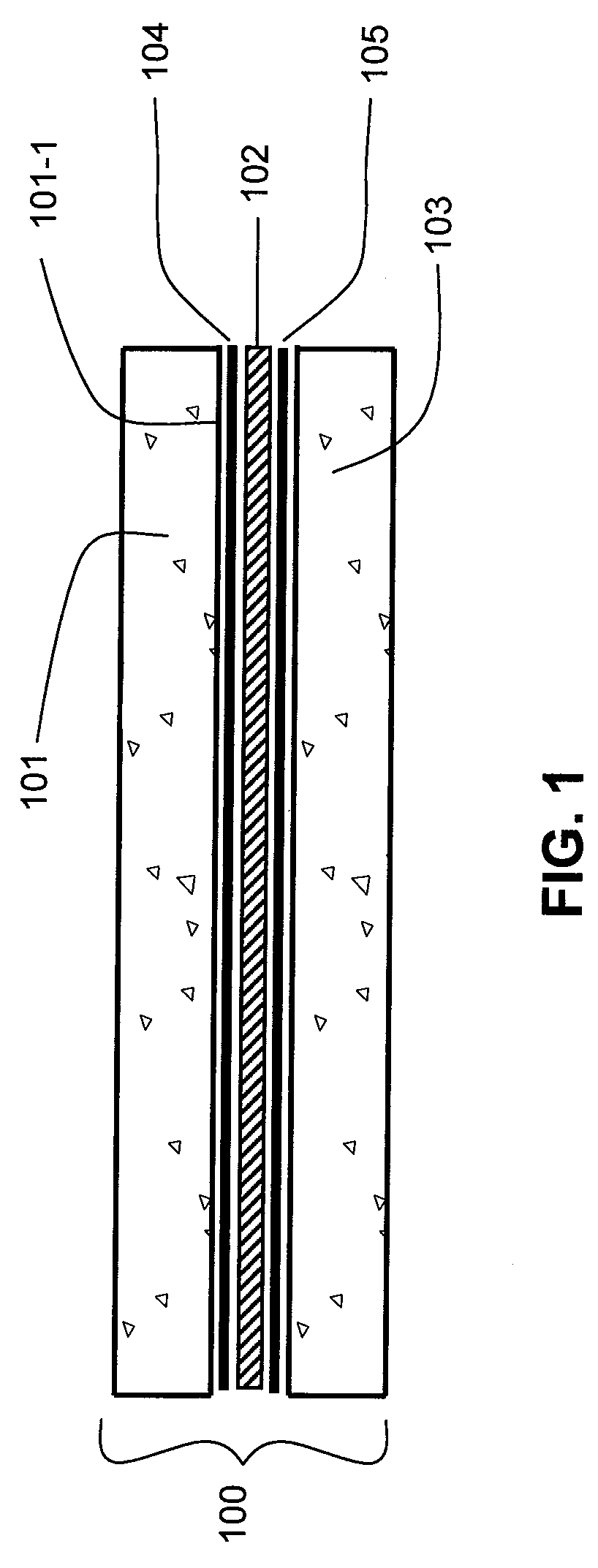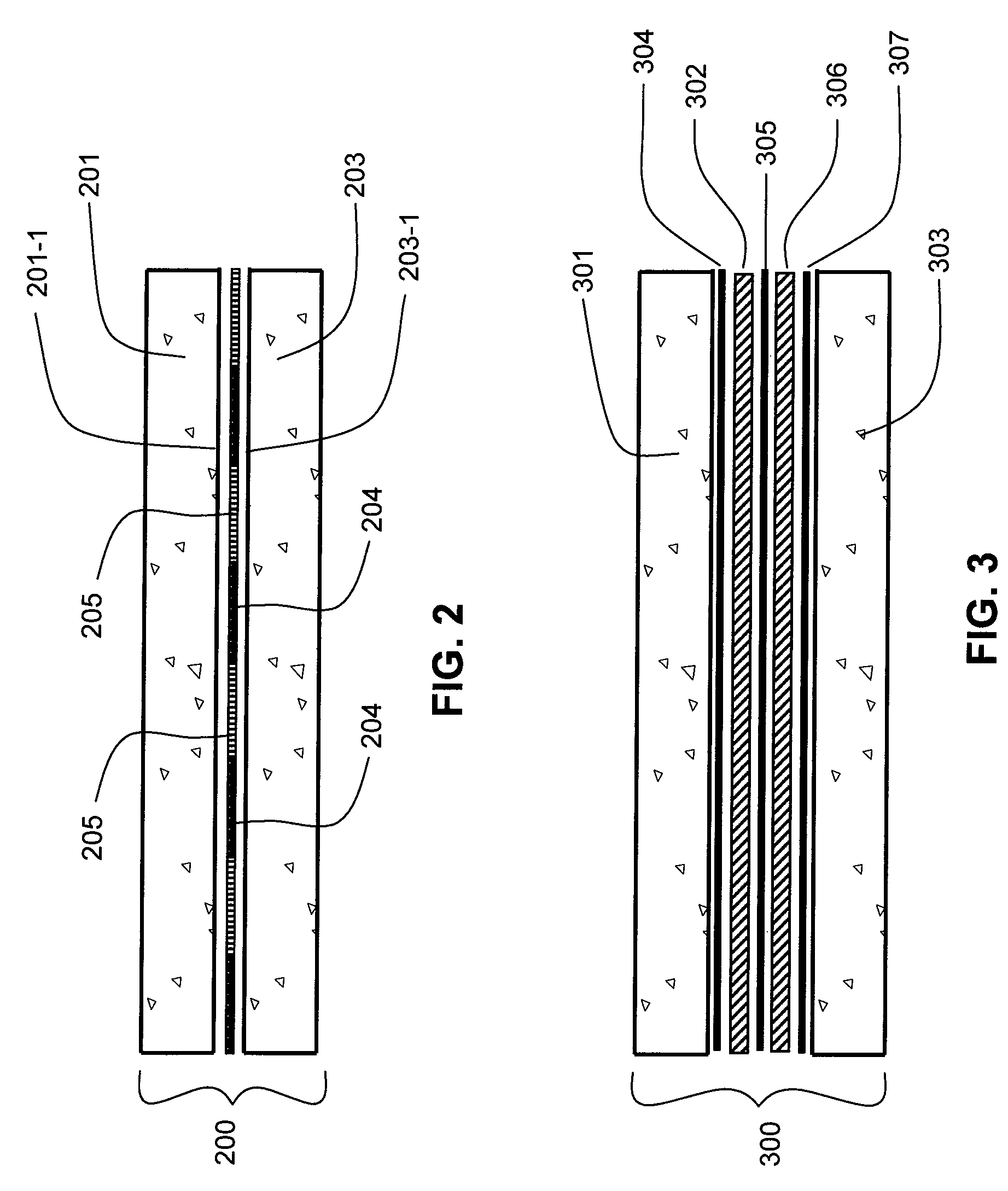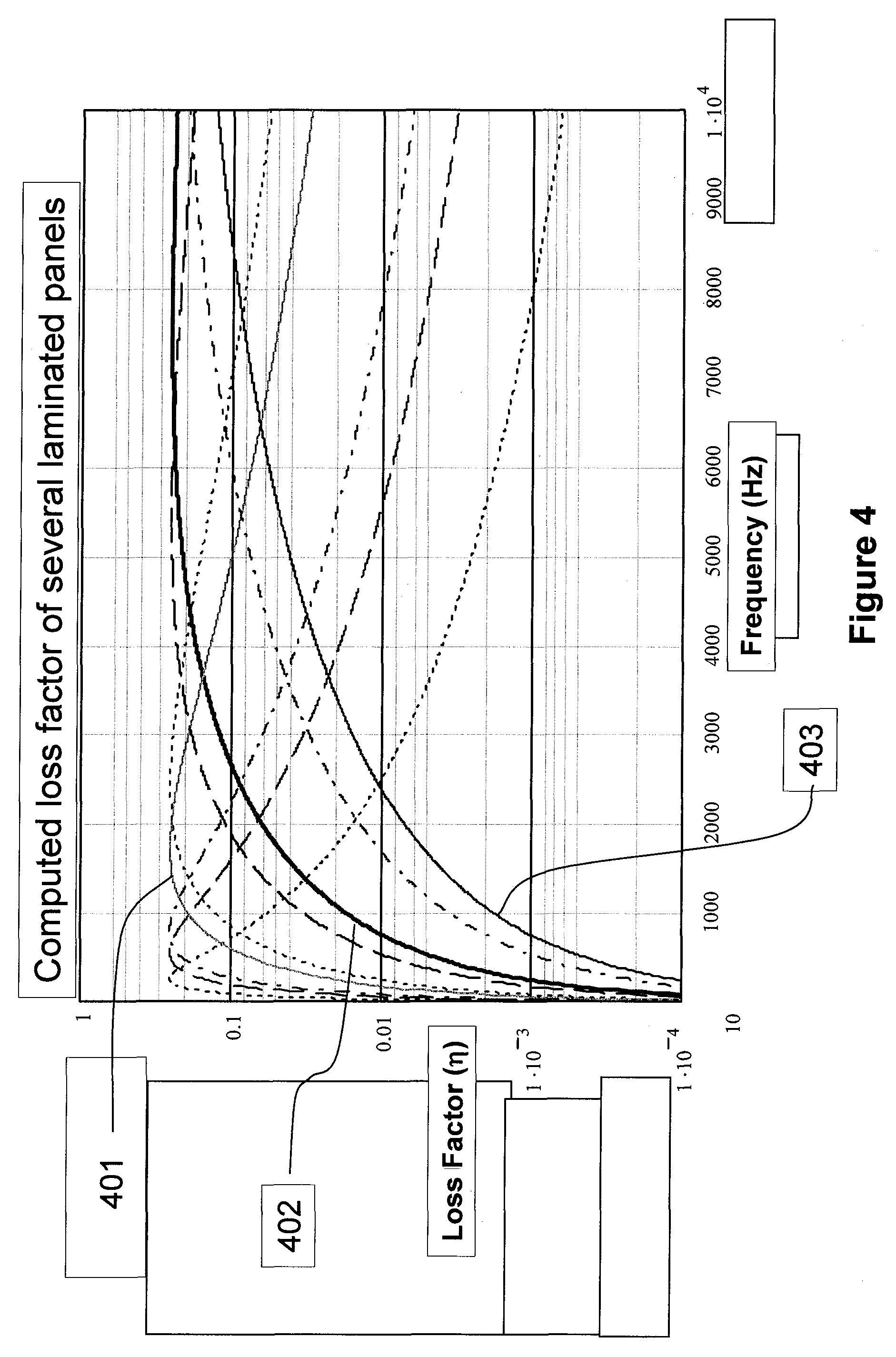Acoustical sound proofing material with improved damping at select frequencies and methods for manufacturing same
a technology of damping and select frequencies, applied in the field of acoustical sound proofing materials with improved damping at select frequencies and methods for manufacturing same, can solve the problems of compounded problems, materials poorly designed for performance according to stc-based evaluation, and the cancellation of builders' liability insurance. , to achieve the effect of improving the ability of walls, ceilings, and resisting the transmission of nois
- Summary
- Abstract
- Description
- Claims
- Application Information
AI Technical Summary
Benefits of technology
Problems solved by technology
Method used
Image
Examples
Embodiment Construction
[0027]The following detailed description is meant to be exemplary only and not limiting. Other embodiments of this invention, such as the number, type, thickness, dimensions, area, shape, and placement order of both external and internal layer materials, will be obvious to those skilled in the art in view of this description.
[0028]The process for creating laminated panels in accordance with the present invention takes into account many factors: exact chemical composition of the glue; pressing process; and drying and dehumidification process.
[0029]FIG. 1 shows laminated structure 100 according to one embodiment of the present invention. In FIG. 1, the layers in the structure are described from top to bottom with the structure oriented horizontally as shown. It should be understood, however, that the laminated structure of this invention will be oriented vertically when placed on vertical walls and doors, as well as horizontally or even at an angle when placed on ceilings and floors. ...
PUM
| Property | Measurement | Unit |
|---|---|---|
| shear moduli | aaaaa | aaaaa |
| shear moduli | aaaaa | aaaaa |
| frequencies | aaaaa | aaaaa |
Abstract
Description
Claims
Application Information
 Login to View More
Login to View More - R&D
- Intellectual Property
- Life Sciences
- Materials
- Tech Scout
- Unparalleled Data Quality
- Higher Quality Content
- 60% Fewer Hallucinations
Browse by: Latest US Patents, China's latest patents, Technical Efficacy Thesaurus, Application Domain, Technology Topic, Popular Technical Reports.
© 2025 PatSnap. All rights reserved.Legal|Privacy policy|Modern Slavery Act Transparency Statement|Sitemap|About US| Contact US: help@patsnap.com



